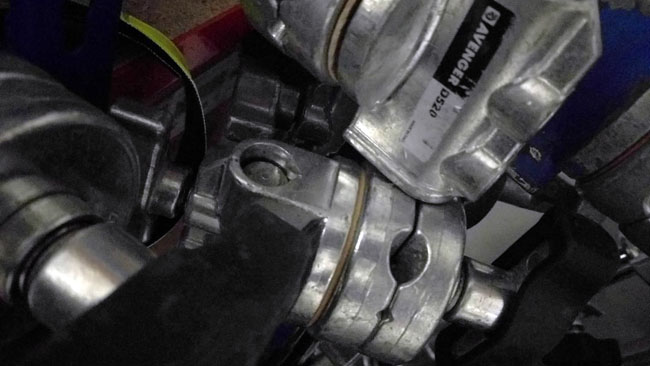
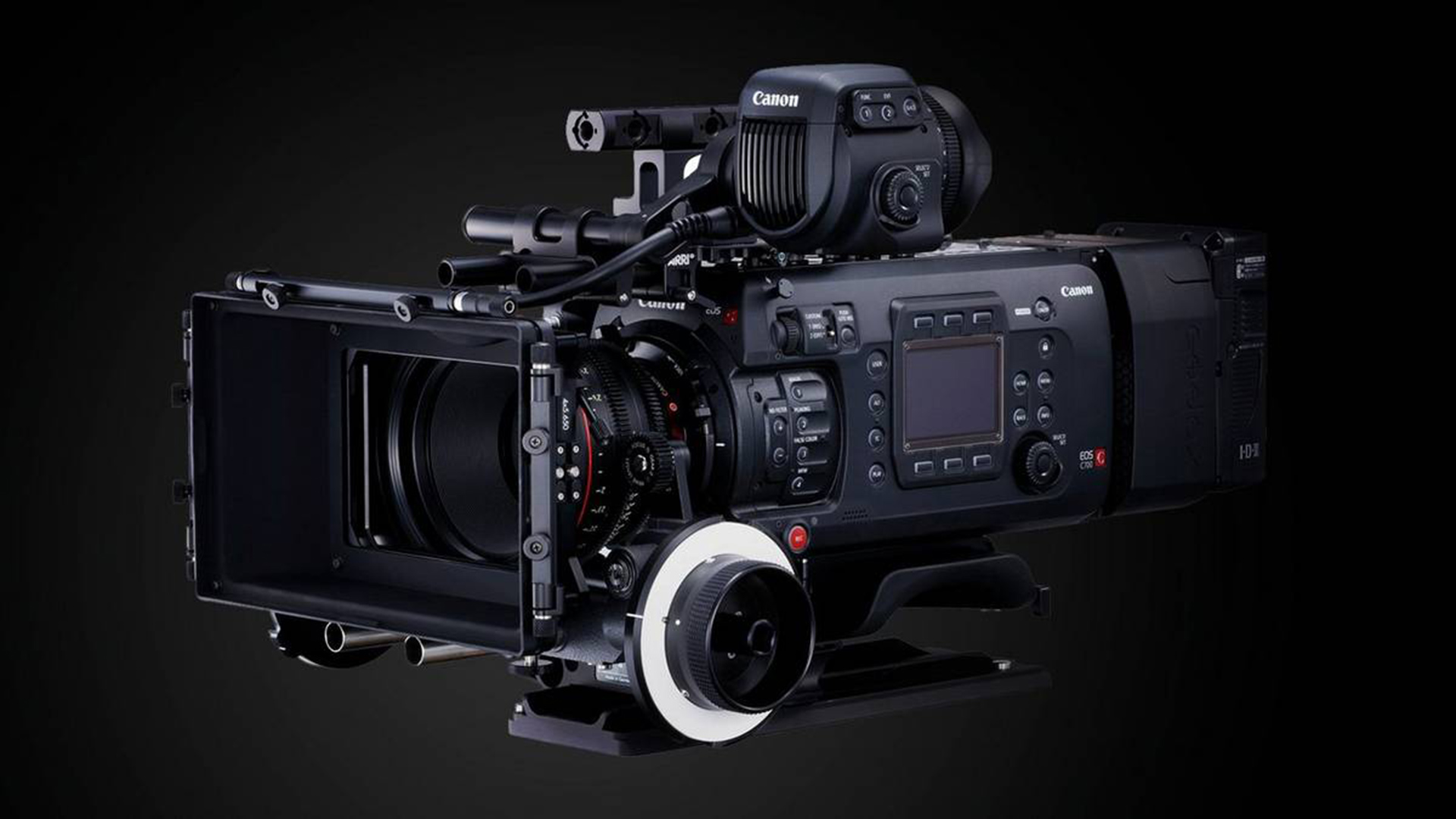 Gear lust resides in everyone. But there are some important pieces of kit that will last a lot longer than a camera, and are arguably more important.
Gear lust resides in everyone. But there are some important pieces of kit that will last a lot longer than a camera, and are arguably more important.
Before you click on the "add to basket" function at your favourite gear supplier, have you really through through your purchase. Phil Rhodes lays down the law with a few tips on what to prioritise in video life.
All of the things I'm going to discuss today are pretty common issues – but they're also elementary enough that experienced people shouldn't be too badly offended. After all, all these sorts of mistakes are firmly in our collective past. Aren't they?
Make long-term purchases
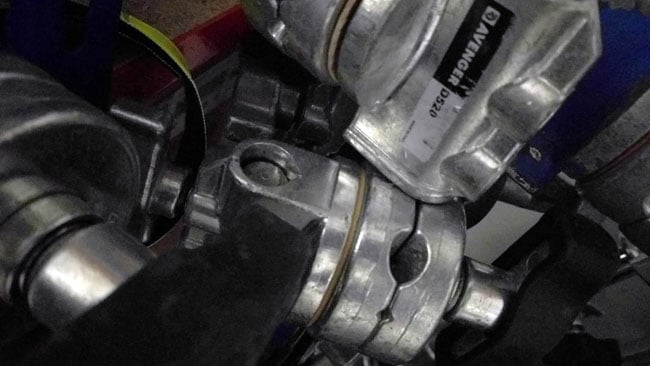
Keep calm and buy C-stands
A while ago, this would have been a paragraph about not buying cameras because they go obsolete so quickly, but it's a particularly interesting consideration at this point in time, because things may be on the point of changing.
Until recently, cameras really had to earn their money back in perhaps around a year, unless they were viewed as a break-even or even a loss leader for other, more profitable areas of work. Further to that, anyone working in a field where the client cares what sort of camera you're using had no option but to stay up to date. Some of us are beholden to chase the bleeding edge regardless of our personal proclivities or technical opinion. If this is your situation, commiserations. The upgrade treadmill has been running fast recently.
To be fair, this may soon change. It's startling to realise that the Canon 5D Mk. II was released over nine years ago. It's now possible to do far better than a 5D Mk. II, at least from a technical perspective, and for far less money than they cost in 2008. We're probably quite close to the longed-for post-scarcity society as far as cameras go. The sound department has arguably been there for some time. Once we're capable of recording 19KHz 24-bit audio, assuming decent mic amplifiers, there's only so much more to add in terms of sheer technical quality. As such, there's progressively less and less technical reason to keep up-to-the-second with certain kinds of equipment, which actually makes cameras a longer-term purchase than they ever have been.
But this isn't really about that. This is about prioritising the decision to own things that don't really date at all and will make a continued and worthwhile contribution to camerawork for film and television until they fall apart in 50 years. We've talked about things like stands and flags before and the reason they keep coming up is that there are never enough of them. People will happily spend thousands on a computer that'll last 18 months before it becomes unusable through obsolescence, but refuse to spend an order of magnitude less on things that'll allow them to shoot nice pictures with it and will last a career.
Buy the basics first. They last.
Technique trumps technology
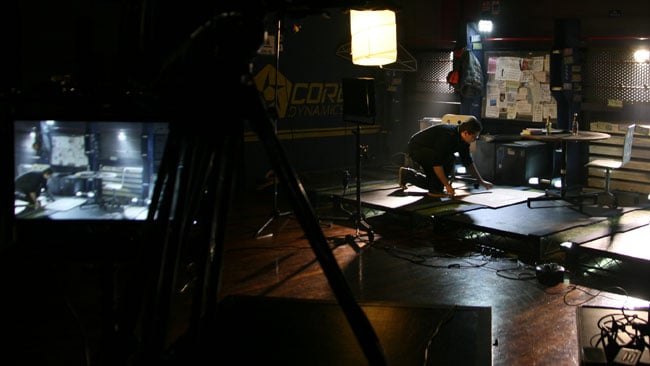
This spaceship interior looks pretty cool on the monitor. It looked pretty cool in reality, too
This one's about gear lust, that youthful appetite for the latest technology that manufacturers absolutely love to provoke by depicting equipment being used in exciting circumstances. Many inexperienced camera people have been drawn in by attractive photography of attractive people in attractive places, wrangling shiny objects covered in blinkenlights. There's sometimes an entertaining contrast to be observed between the excitement of the brochures and the sort of work inexperienced camera people actually end up doing, but that's beside the point.
The point is that technique has always been more important than technology. Even back in the days of standard-definition cameras that didn't shoot any sort of low-contrast signal, we could apply production design, lighting and direction to lift a shot from the look of an everyday soap-opera to something with the longed-for legitimacy of a high-end drama or feature film. More pixels and more stops of dynamic range haven't changed that. They've made it easier, perhaps – especially in circumstances where we can't easily control hot skies or flickering flames. Even the least-sophisticated audiences who can't articulate the specific problems, though, can recognise something cheap about a badly-designed image.
If this sounds dangerously like a firm instruction only to work on massively budgeted feature films with months and millions to spend on making everything look fantastic – well, in an ideal world. But even in a less-ideal world, we're probably all guilty of not paying enough attention to what we're pointing the camera at, as opposed to what camera we're pointing at it. Depending on what the work is, of course, sometimes we get very little choice. Still, even very elementary changes to production design – often things like colour control, expressed in the choice of wardrobe, vehicle colour or location – can make a very worthwhile difference.
Put more effort into finding pretty things to shoot, and try not to worry about pixels.
Shoot more
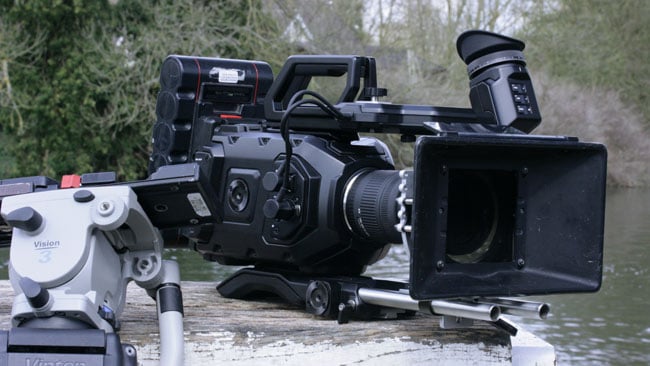
Take it out and point it at things
This might be taken as one for the beginners, but it probably shouldn't be. Almost any sort of camerawork is an art form and learning that art form is an essentially open-ended process requiring a certain degree of dedication and enthusiasm. If this means taking the occasional low-paid job or even a freebie, well, that can be fine sometimes, although it certainly behoves us to approach these situations with an understanding of why we're doing certain things (we've talked about freebies before).
Still, it's too easy to sit around with a lot of money's worth of production equipment on a shelf and not use it, especially if a few years in the game have made that longed-for dream job into just another day at work. Getting out of bed at 5.30am on a freezing December morning with the prospect of dragging heavy cases around all day in return for bad food, little money and a late finish is not a great motivator for most people. If you're doing this several days a week, you're shooting enough. If not, if it's been a couple of weeks, or if you only get to shoot pretty pictures when the on-screen talent has decided to cover a story about a local wildlife reserve, things may be different.
Shooting a time lapse can be a relaxing afternoon's engagement under the right circumstances. Keeping things contained and undemanding makes it easier to shoot nice-looking stuff in any case. This sort of thinking has led to the sort of work that has been rather haughtily dismissed as “Vimeography,” after the montages to music, often shot on DSLRs under available light and with a very shallow depth of field, simply as an exercise. There's a danger that this sort of thing can be too easy, and without any demand to tell a story there's no challenge other than finding the most attractive ways to shoot a preexisting situation. Anyone can do that, and a bit more structure and a challenge are often necessary – pick a mood that conflicts with the real situation, maybe, and try to shoot for it. Do something you don't usually do. Try something outlandish.
But shoot.
Tags: Production


Comments